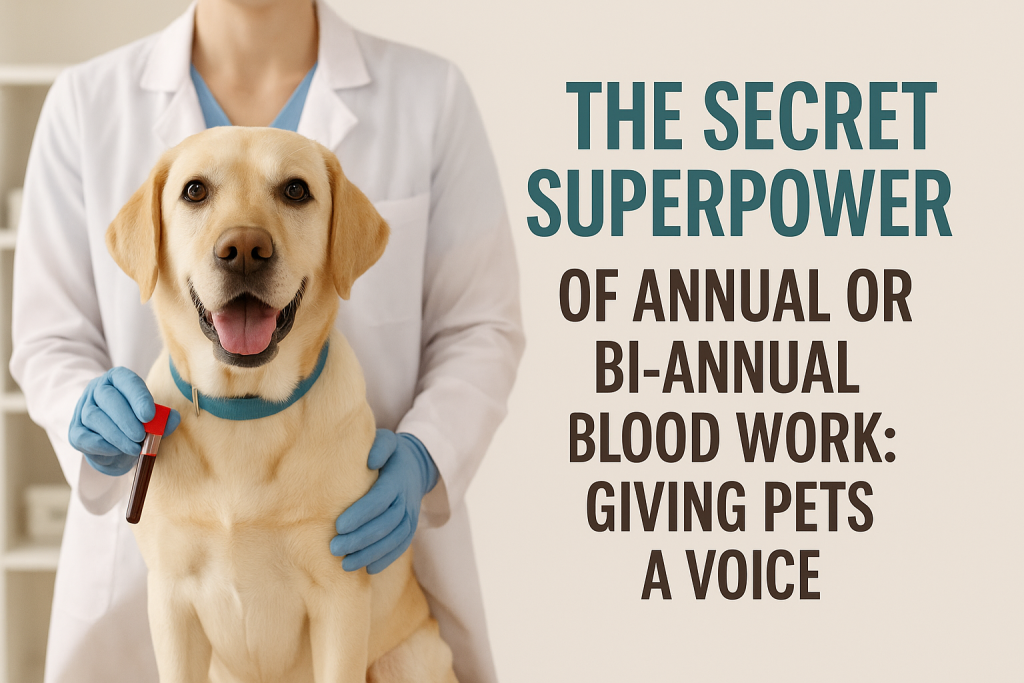
If dogs and cats could talk, life would be so much easier. Imagine your cat hopping on the counter and saying, “Hey, my kidneys aren’t feeling 100% today,” or your dog announcing, “I think my thyroid’s a little sluggish.” Sadly, our furry friends can’t tell us what’s going on inside their bodies.
That’s where annual blood work comes in—it’s like giving your pet a secret voice.
Pets Are Masters of Disguise 🕵️♂️
Dogs and cats are pros at hiding illness. In the wild, showing weakness could make them vulnerable, and they haven’t lost that instinct. So, your pup might still chase the ball, and your cat may still curl up in the sun, even if something’s brewing under the surface.
Blood work helps us “peek behind the curtain.” It’s the inside scoop on how their internal organs are really doing, long before symptoms show up.
Think of It Like a Report Card 📊
When your pet gets their annual blood work, it’s like getting a progress report from their body.
- Kidneys & liver: Are they running smoothly or showing early signs of stress?
- Blood sugar: Is diabetes creeping in?
- Thyroid levels: Too sluggish or too speedy?
- Red & white blood cells: Are they ready for battle or waving the white flag?
And here’s the best part: even if everything looks normal, those numbers become a baseline—like the very first page of your pet’s health story. Every year after, we can flip back and see what’s changed.
A Relatable Example 🐾
Meet Bella, a 9-year-old cat who still rules the household with sass. Her blood work at her annual visit showed early kidney changes—before she ever acted sick. With a diet change, her kidneys got the support they needed, and Bella kept up her reign as queen of the couch.
Or take Cooper, the Labrador who thinks life is one giant buffet. His annual blood test caught liver values that were just a little off. A quick adjustment and regular monitoring kept him healthy enough to keep stealing sandwiches off the counter.
The “Check Engine Light” for Pets 🚗
Think of annual blood work like the check engine light on your car—except pets don’t come with one. They can look perfectly fine while something serious is going on under the hood. With blood work, we can catch small changes before they become big problems.
Age Plays a Big Part
Did you know that when a pet reaches the age of 7 years old, they’re considered geriatric? We highly recommend bloodwork every 6 months when they reach the later stage of their life, to ensure we catch any new changes that could severely impact their health and quality of life if left undiagnosed.
The Bottom Line ❤️
Annual blood work isn’t just another box to check at the vet—it’s one of the most powerful tools we have to keep our furry family members around for as many happy, healthy years as possible.
Because at the end of the day, it’s not just about lab values—it’s about more tail wags, more purrs, and more snuggles on the couch.
Call us today to get bloodwork run on your furry companion, let’s keep them happy and healthy for years to come!
